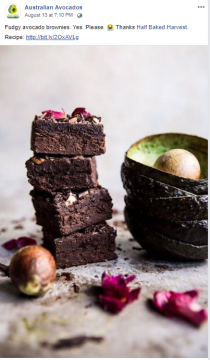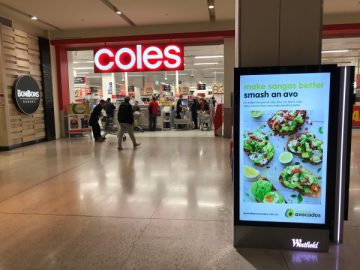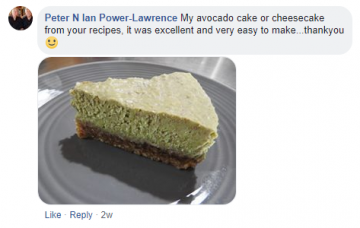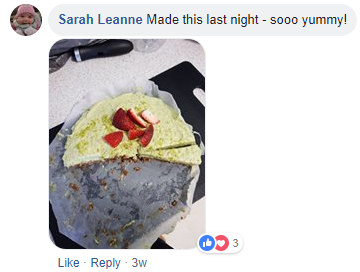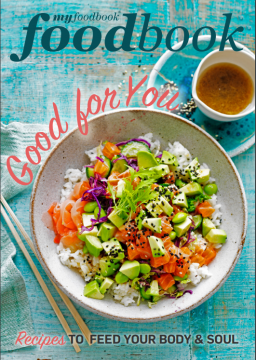This article appears in the Autumn 2018 edition of Talking Avocados (Volume 29 No 1).
Does impact injury at harvest increase body rots at retail?
By Melinda Perkins, Muhammad Mazhar, Daryl Joyce, Noel Ainsworth, Lindy Coates and Peter Hofman
In spite of burgeoning demand for avocados, meeting consumer expectations for fruit quality is an ongoing challenge.
Recent monitoring of avocado fruit quality in Australian retail stores found that body rots were the second most common internal quality defect, after flesh bruising1. Body rots are most often the result of a fungal disease known as anthracnose. Symptoms initially appear as light brown circular lesions and enlarge to produce sunken dark-brown or black areas on the fruit surface, sometimes with salmon-pink spore masses in the centre of lesions (Figure 1)2.
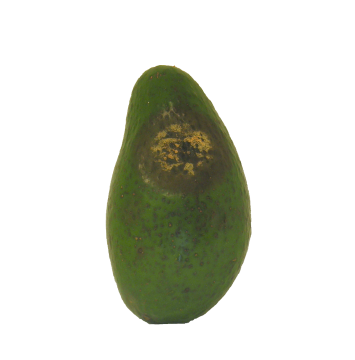
Figure 1. Anthracnose in Shepard avocado fruit
Symptoms can be harder to detect externally in Hass fruit, however, due to the blackening of the skin during ripening. In the course of our research on avocado bruising, we noticed that unripe fruit subjected to impact injury seemed to be more prone to body rots when they ripened. We decided to investigate the issue further. Here, we provide an overview of the anthracnose infection process and how mechanical wounding of avocado fruit might trigger the disease. Findings from our preliminary experiments are also presented.
Evidence for impact-induced body rots
Hass avocado fruit subjected to either a 50cm or 100cm drop height at the hard green mature stage using a swing arm device (Figure 2) showed no signs of flesh bruising, but began exhibiting body rots seven days after impact when held at 20°C3. Between seven and 15 days after impact, body rots frequently occurred at the impact site in one or two of the five different fruit assessed daily from each drop height treatment.
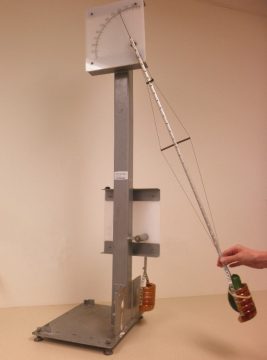
Figure 2. Swing arm device used in laboratory experiments to apply controlled and consistent impacts to fruit.
By comparison, no rot development was found in non-impacted control fruit. The finding prompted us to undertake preliminary research into this phenomenon. We found that a drop height of 30cm incurred on the day of harvest significantly increased the number and size of body rots expressed at the impact site in Hass fruit at the soft ripe stage (Figure 3).

Figure 3. Flesh surface of ‘Hass’ avocado fruit subjected to no impact (left) and impact from a 30cm drop height (right) on day of harvest showing differences in body rot expression at soft-ripe stage.
However, no significant difference in body rot incidence or severity was observed between non-impacted fruit and fruit subjected to a 15cm drop height. Whilst these initial findings provide evidence of a link between impact injury and body rot expression, large-scale experiments conducted across multiple seasons and orchards are needed to validate the relationship. Formal identification of the causal pathogen is also required.
What triggers anthracnose?
The symptoms of anthracnose usually develop on avocado fruit as they ripen after harvest. However, initial infection generally occurs in the orchard during fruit set and development4. Spores of the fungal pathogen (which could be one of a number of different Colletotrichum species now known to be associated with anthracnose in avocado) are deposited on the fruit surface by water dispersal (e.g. rainfall). Under the right conditions, spores germinate to produce infection structures called appressoria, which anchor themselves firmly to the surface of fruit. Appressoria then germinate to produce a short infection peg in the cuticle of the fruit skin5. At this point, fungal growth stops and the pathogen remains dormant or ‘quiescent’. Identifying the triggers that activate pathogen growth upon fruit ripening has been the focus of much research.
Avocados have been shown to produce six natural defence compounds that are toxic to C. gloeosporioides6-9. The most abundant is generally a triene compound called Persenone A10. However, a related diene compound called persin has received the most attention as it is more potent or ‘fungitoxic’ than other defence compounds7-9. Persin levels in the peel rapidly decline after harvest7, 11, which partly explains why ripe fruit are more susceptible to body rots than unripe fruit.
Ripening also causes the pH of the peel to increase, which in turn triggers the pathogen to release a tissue-degrading enzyme called pectate lyase12. The pathogen itself is capable of altering fruit pH by releasing ammonia into the fruit tissues, further hastening body rot development13.
A favourable balance of mineral nutrients in the fruit can help combat anthracnose. Fruit with low nitrogen levels, high calcium levels and/or a low nitrogen to calcium (N:Ca) ratio tend to be less susceptible to body rots14-19. Calcium ions bind with pectic substances in the cell walls, making them less accessible to cell wall-degrading enzymes produced by the pathogen20. It is also suggested that avocado fruit use calcium ions as a signal to initiate defence responses to pathogen invasion21. Nitrogen, on the other hand, promotes anthracnose. Nitrogen is used by the pathogen to produce ammonia and trigger secretion of the pectate lyase enzyme22. The more nitrogen the pathogen can access, the greater the amount of enzyme it secretes23.
Once the infection process has been activated, the rate of disease development will largely depend on the temperature and humidity at which the fruit are held. Body rots can be limited by ensuring fruit are not wet when harvested, cooling fruit to 5°C (for Hass) as soon as possible after harvest, application of post-harvest fungicides and ensuring ripening temperatures do not exceed 24°C.
How might impact injury promote anthracnose?
Cell damage at the site of impact becomes immediately apparent in freshly harvested unripe avocado fruit, even though bruising may not occur24. Cells of unripe fruit are relatively elastic, but magnetic resonance imaging suggests that cellular fluids are forced out of the cells and into surrounding air spaces upon impact24. Injured fruit may respond with a rapid increase in respiration rate and accelerated softening25. Other types of mechanical injuries to avocado fruit produce similar responses. Increased respiration rate26, ethylene production26, 27 and tissue softening26 were observed in unripe avocados subjected to cutting injury.
Most of these responses are indicative of early ripening and (as discussed above) ripening is a trigger for anthracnose development. However, our preliminary studies found that whilst impact injury of hard fruit often promoted body rots, it did not hasten fruit softening. Other researchers also reported that impact injury does not promote ripening of avocado fruit28. This may mean that other factors contribute to impact-induced body rot development.
Changes in the levels of antifungal defence compounds in response to injury may be one factor. Freshly harvested avocado fruit subjected to multiple puncture wounds showed an initial spike in persin levels after 24 h29, but this was followed by a rapid decline to sub-fungitoxic levels9 six days after wounding. Whether antifungal compounds decrease more rapidly in impacted fruit than in non-impacted fruit is not known. If they do, then it may help to explain the greater body rot expression seen in response to impact injury.
Where to next?
Despite some evidence that impact injury promotes postharvest disease in avocado, rigorous research is needed to characterise and confirm the relationship, and to determine the potential economic consequences for industry stakeholders. Better understanding of underlying causes for impact-induced anthracnose is also needed, as existing information is limited and sometimes contradictory.
The current project (AV15009) will begin by monitoring body rot development in pre-impacted freshly harvested Hass avocados as they progress through actual and laboratory-simulated supply chains. Results will be compared with those obtained for non-impacted control fruit subjected to the same supply chain conditions. Data could then be used to predict final fruit quality and subsequent profitability in response to differing supply chain management practices.
Acknowledgement
The Supply chain quality improvement – Technologies and practices to reduce bruising project (AV15009) is funded by Hort Innovation, using the Hort Innovation avocado research and development levy, co-investment from the Queensland Department of Agriculture and Fisheries, the University of Queensland, Avocados Australia Ltd and contributions from the Australian Government.
References
- Tyas, J. (2016). Avocado industry fruit quality benchmarking. Final report AV11015. Horticulture Innovation Australia, Sydney.
- Dann, E.K., Ploetz, R.C., Coates, L.M. and Pegg, K.G. (2013). Foliar, fruit and soilborne diseases, p. 380-422. In: B.A. Schaffer, B.N. Wolstenholme and A.W. Whiley (eds.). The avocado: Botany, production and uses. 2nd ed. CABI Publishing: Wallingford, UK.
- Joyce, D.C., Mazhar, M.S. and Hofman, P.J. (2015). Reducing flesh bruising and skin spotting in ‘Hass’ avocado. Final report AV10019. Horticulture Australia Limited, Sydney, Australia.
- Peterson, R. (1978). Susceptibility of Fuerte avocado fruit at various stages of growth, to infection by anthracnose and stem end rot fungi. Australian Journal of Experimental Agriculture and Animal Husbandry 18, 158.
- Coates, L.M., Muirhead, I.F., Irwin, J.A. and Gowanlock, D.H. (1993). Initial infection processes by Colletotrichum gloeosporioides on avocado fruit. Mycological Research 97, 1363-1370.
- Adikaram, N.K.B., Ewing, D.F., Karunaratne, A.M. and Wijeratne, E.M.K. (1992). Antifungal compounds from immature avocado fruit peel. Phytochemistry 31, 93-96.
- Sivanathan, S. and Adikaram, N.K.B. (1989). Biological activity of four antifungal compounds in immature avocado. Journal of Phytopathology 125, 97-109.
- Domergue, F., Helms, G.L., Prusky, D. and Browse, J. (2000). Antifungal compounds from idioblast cells isolated from avocado fruits. Phytochemistry 54, 183-189.
- Prusky, D., Kobiler, I., Fishman, Y., Sims, J.J., Midland, S.L. and Keen, N.T. (1991). Identification of an antifungal compound in unripe avocado fruits and its possible involvement in the quiescent infections of Colletotrichum gloeosporioides. Journal of Phytopathology 132, 319-327.
- Rodriguez-Lopez, C.E., Hernandez-Brenes, C. and Diaz De La Garza, R.I. (2015). A targeted metabolomics approach to characterize acetogenin profiles in avocado fruit (Persea americana). RSC Advances 5, 106019-106029.
- Prusky, D., Keen, N.T. and Eaks, I. (1983). Further evidence for the involvement of a preformed anti-fungal compound in the latency of Colletotrichum gloeosporioides on unripe avocado fruits. Physiological Plant Pathology 22, 189-198.
- Yakoby, N., Kobiler, I., Dinoor, A. and Prusky, D. (2000). pH regulation of pectate lyase secretion modulates the attack of Colletotrichum gloeosporioides on avocado fruits. Applied and Environmental Microbiology 66, 1026-1030.
- Prusky, D., McEvoy, J.L., Leverentz, B. and Conway, W.S. (2001). Local modulation of host pH by Colletotrichum species as a mechanism to increase virulence. Molecular Plant-Microbe Interactions 14, 1105-1113.
- Leonardi, J. (2005). Avocado canopy and orchard floor management. Final report AV00007. Horticulture Australia Ltd, Sydney, Australia.
- Vuthapanich, S. (2001). Preharvest practices affecting postharvest quality and mineral composition of ‘Hass’ avocado fruit. PhD Thesis, The University of Queensland, Australia.
- Marques, J.R., Hofman, P.J. and Wearing, A.H. (2003). Rootstocks influence ‘Hass’ avocado fruit quality and fruit minerals. Journal of Horticultural Science & Biotechnology 78, 673-679.
- Coates, L.M., Dann, E.K., Shuey, L.S., Smith, L.A., Dean, J.R., Cooke, A.W., Pegg, K.G., Hofman, P.J., Marques, J.R., Stubbings, B.A. and Whiley, A.W. (2011). Effects of rootstock on avocado fruit quality – assessment of postharvest disease, major cations and biochemical traits. In: Proceedings VII World Avocado Congress, Cairns, 5-9 Sep.
- Willingham, S.L., Pegg, K.G., Anderson, J.M., Cooke, A.W., Dean, J.R., Giblin, F.R. and Coates, L.M. (2006). Effects of rootstock and nitrogen fertiliser on postharvest anthracnose development in Hass avocado. Australasian Plant Pathology 35, 619-629.
- Whiley, A.W. (2013). Rootstock improvement for the Australian avocado industry – phase 3. Final report AV08000. Horticulture Australia Ltd, Sydney, Australia.
- Wehr, J.B., Menzies, N.W. and Blamey, F.P.C. (2004). Inhibition of cell-wall autolysis and pectin degradation by cations. Plant Physiology and Biochemistry 42, 485-492.
- Djami-Tchatchou, A.T., Straker, C.J. and Allie, F. (2012). 454 sequencing for the identification of genes differentially expressed in avocado fruit (cv. Fuerte) infected by Colletotrichum gloeosporioides. Journal of Phytopathology 160, 449-460.
- Kramer-Haimovich, H., Servi, E., Katan, T., Rollins, J., Okon, Y. and Prusky, D. (2006). Effect of ammonia production by Colletotrichum gloeosporioides on pelB activation, pectate lyase secretion, and fruit pathogenicity. Applied and Environmental Microbiology 72, 1034-1039.
- Drori, N., Kramer-Haimovich, H., Rollins, J., Dinoor, A., Okon, Y., Pines, O. and Prusky, D. (2003). External pH and nitrogen source affect secretion of pectate lyase by Colletotrichum gloeosporioides. Applied and Environmental Microbiology 69, 3258-3262.
- Mazhar, M., Joyce, D.,Cowin, G., Brereton, I., Hofman, P., Collins, R. and Gupta, M. (2015). Non-destructive 1H-MRI assessment of flesh bruising in avocado (Persea americana) cv. Hass. Postharvest Biology and Technology 100, 33-40.
- Ben-Yehoshua, S., Robertson, R.N. and Biale, J.B. (1963). Respiration and internal atmosphere of avocado fruit. Plant Physiology 38, 194-201.
- Starrett, D.A. and Laties, G.G. (1991). Involvement of wound and climacteric ethylene in ripening avocado disks. Plant Physiology 97, 720-729.
- Owino, W.O., Nakano, R., Kubo, Y. and Inaba, A. (2002). Differential regulation of genes encoding ethylene biosynthesis enzymes and ethylene response sensor ortholog during ripening and in response to wounding in avocados. Journal of the American Society for Horticultural Science 127, 520-527.
- Arpaia, M.L., Mitchell, F.G., Katz, P.M. and Mayer, G. (1987). Susceptibility of avocado fruit to mechanical damage as influenced by variety, maturity and stage of ripeness. South African Avocado Growers’ Association Yearbook 10, 149-151.
- Prusky, D., Karni, L., Kobiler, I. and Plumbley, R. A. (1990). Induction of the antifungal diene in unripe avocado fruits: effect of inoculation with Colletotrichum gloeosporioides. Physiological and Molecular Plant Pathology 37, 425-435.




